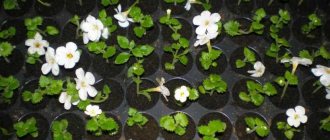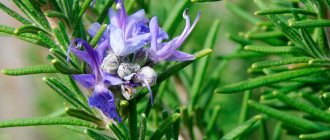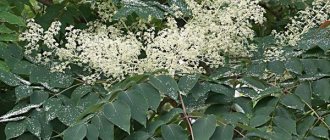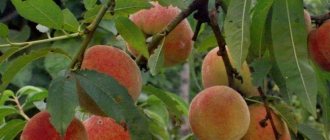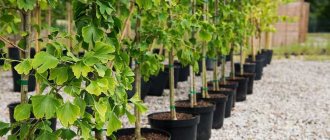Flowering plants delight the owner only during flowering, while decorative deciduous plants win the hearts of gardeners because they are beautiful all year round. They are valued for their unusual color and shape of leaves, and the most striking representatives of this group are the aroids. This family includes: monsteras, philodendrons, syngoniums, scindapsus, caladiums. Each genus includes more than 50 species and varieties, among which you can find the one you like. Plants are unpretentious, but knowledge and application of certain rules will allow you to get the highest possible results.
Decorative foliage indoor plants
Plants with intricately colored or cut leaves mostly come from hot countries with tropical and subtropical climates. It is advisable to grow perennials at home. They bloom rarely, usually 5 or more years after planting. The flowers are often inconspicuous and small. The seeds are formed rarely, take a long time to ripen, are colored black, and have a hard shell.
Miniature garden of decorative foliage succulents
Note! The list of decorative crops for homes and offices, which are used by professional design and landscaping specialists, is constantly updated with new varieties and rare names.
Classification of indoor plants
Depending on their life form, decorative deciduous crops are divided into:
- herbs;
- shrubs, shrubs and subshrubs;
- trees.
For your information! The main difference between shrubs and trees and herbs is the presence of a stem and trunk, which can be covered with crust or not.
Herbaceous plants, in turn, are divided into leafy, leafy, and climbing. In addition, plants are grouped in relation to environmental factors, belonging to groups and species with a characteristic structure of leaves and shoots.
Appearance and leaves of decorative foliage plants
Aesthetic qualities are formed by the following characteristics of leaves:
- shape and thickness;
- degree of dissection;
- coloring;
- the nature of the surface is glossy or matte.
In addition, designers combine decorative foliage plants with drooping or erect rosettes.
Appearance
The appearance of the foliage of decorative indoor plants is very diverse and differs in shape, size, leaf outline and texture, not to mention pattern and color.
The range is enormous - soleirolia has tiny leaves, while monstera leaves reach 60 cm wide; Croton has whole leaves with smooth edges, and asparagus is proud of its unusual pinnate foliage.
The texture of the leaf itself can also be the most unpredictable : smooth, prickly, matte, shiny, velvety, corrugated, etc. The leaves can be completely green, or they can be variegated, multi-colored, with different veins, and so on.
Groups of decorative foliage plants
Here are the main groups that unite one or more botanical species of decorative foliage crops.
Ferns
Low-growing shrubs - flowering and decorative foliage for the garden
A group of the oldest plants on Earth, in nature they form dense thickets in the undergrowth of humid forests. Small emerald-colored leaves are arranged in rows on tall shoots that may droop. The variety of ferns includes: Nephrolepis, Adiantum (curly fern), Pteris cretanum and xiphoid, Pellea rotundifolia, ovate, glabrous. An epiphytic fern is Davallia, which forms aerial roots. In nature, they are needed to cling to trees, which are the “home” for ferns. The Blechnum fern species is often confused with the palm tree. The shoots of this plant can reach a height of 1 m.
Note! The most decorative and demanding of heat and moisture is the Adiantum Venus hair fern.
Palm trees
Palms are a large group of plants adapted to a wide range of conditions: from severely dry with full light to wet and shady. They are quite easy to grow at home. The life form of palm trees is trees of varying heights with a well-defined trunk, which can be densely covered with hairs.
For most palm trees to overwinter, a decrease in ambient temperature and humidity is necessary. With the arrival of spring and summer, the optimal air temperature for them is 23-25 °C. The most decorative are Washingtonia filamentosa, Canarian date, and Trachycarpus Fortune.
Ampelous plants
Hanging plants are climbing or vines that are very popular for creating decorative green walls. Ivy is unpretentious and shade-tolerant, does not require abundant watering, and purifies indoor air well. Tradescantias are traditional and very unpretentious. When choosing a climbing plant, pay attention to whether the crop forms sucker shoots or not.
Important! In some cases, bushes can damage the wall cladding and require the organization of special trellises.
Succulents
This decorative foliage form is adapted to bright light and mild drought, has fleshy leaves, and very limited growth. Modern species have leaves of different colors. In design they are used to create miniature gardens.
Succulent species include Morgan's sedum, plated aeonium, wavy cotyledon, tirucalli spurge, pearly haworthia, Rowley's ragus.
Note! Succulents at home are susceptible to rot; the watering regime should be strictly observed without sudden fluctuations in soil moisture.
What you need to know about aroids
@ kuzina1964 stock.adobe.com Syngonium white butterfly
Most often, when growing aroids, no difficulties arise. This is due to the fact that plants of this family are absolutely unpretentious.
Advice! When you bring a plant home, try to find out as much information as possible about it. Check with sources to find out what environment is natural for it. Try to make the conditions in the apartment as close as possible to the plant.
The natural environment for decorative deciduous aroids is the tropics. It is consistently warm and humid there - this is the main point that is worth considering. The standard temperature in a living room is 22-25 degrees, but the humidity is low. Therefore, flower growers have to increase it artificially. To do this, plants are sprayed or placed on trays with wet pebbles. Particularly demanding of humidity are: alocasia, caladium and dieffenbachia. Monstera and Philodendron are capable of putting up with “apartment” conditions.
Attention should be paid not only to air humidity, but also to soil humidity. It is necessary to avoid excessive waterlogging and drying out of the coma. Watering should be adjusted. Only soft, settled water at room temperature can be used for plants. Watering with tap water is unacceptable; although it does not contain large quantities of chlorine, it is detrimental to the root system.
Active growth in representatives of this family occurs from spring to summer. At this time, even in an apartment, favorable conditions are created for them: sunny and warm. For active vegetation, plants need to be fed. It is most convenient to use dry or liquid mineral fertilizers. They need to be applied to the soil once a week. Please note that many aroids have a sensitive root system, so fertilizers can only be applied to moist soil. It is optimal to do this 2 days after watering.
The plants are distinguished by their rapid growth. You don't have to wait several years to get an adult specimen. Replanting is carried out annually, but only if the pot has become too tight for the root system. Special attention should be paid to the choice of soil. A high-quality soil mixture can be obtained by adding leaf soil, pine needles, peat and sand. Perlite and vermiculite will not be amiss.
@ sundaemorning dayflowers.ru Rich green philodendron leaves
Stagnant moisture is detrimental to all plants and aroid plants are no exception. It is necessary to make holes in the flowerpot to drain the water, and lay expanded clay drainage at the bottom of the pot, in a layer of at least 1 cm.
Classification of decorative foliage plants according to temperature conditions
For the most part, deciduous indoor flowers are heat-loving crops. In winter, they require lowering the indoor air temperature. However, pots should not be allowed to be kept on a cold floor where the temperature drops below 10 °C. The root system of deciduous flowers is sensitive to cold.
Heat-loving
Large indoor plants with large leaves
Heat-loving crops include those that require a temperature of 25-28 °C in summer and 20-22 °C in winter. A striking representative is Alocasia. This powerful plant is used in interiors as a solo plant. The leaves are very large and dark green in color.
For your information! There are varieties with striped coloring and wavy edges.
Alocasia calidora
Frost-resistant
For indoor culture, frost resistance is not so important. However, arrowroot is very well adapted to a wide range of conditions. Its leaves can be folded to retain moisture. The species tolerates cold and light frost.
Cold-resistant
Plant species that require a temperature drop to 8-10 °C in winter can tolerate temperatures of 18-22 °C in summer. Such crops include aucuba, araucaria, and lemon.
Types, varieties, names
Let's take a closer look at decorative foliage indoor plants with photos and names.
- Trees are used in decorating garden plots and small offices. They give the room an incomparable beautiful appearance, and the open gardens provide quiet, secluded places. They prefer plenty of sunlight. Some subspecies may require crown formation.
- Banana is a large perennial plant with a powerful root system. It reaches a height of more than 7 meters. It has large leaves reaching a length of more than 5-6 meters. The leaves are covered with a thin layer of waxy coating. Blooms in summer. After flowering it forms emerald fruits.
- Avocado is a large fruit tree. It can grow both in garden plots and indoors. It reaches a height of 18-20 meters. Requires mandatory crown formation. In poor conditions it hardly blooms or bears fruit. Read about what an avocado is and how to grow it here.
- Laurel has become widespread due to its numerous beneficial properties. Easily amenable to crown formation. It reaches a height of 10-16 meters. The lifespan of this representative of the flora can reach more than 300 years.
- Lemon is an evergreen tree reaching a height of more than 9 meters. It has a wide spreading crown with a large number of stems. Forms very smooth bark and small thorns located on all branches of the tree. It has shiny, leathery, oval-shaped leaves.
- Privet - can grow in open ground. Used to decorate garden compositions. Can be used as a hedge. It has leathery, shiny leaves. It blooms with miniature snow-white flowers that have a wonderful aroma.
- Cypress is an evergreen tree reaching a length of 20-25 meters. Has slow growth. It has a spreading pyramidal crown with a large number of stems. Forms oval-shaped woody cones.
- Mango is an evergreen fruit tree. Can be used for growing at home. It blooms with miniature fragrant flowers in winter. Requires good lighting. Has an active growth rate.
- Myrtle is an evergreen fragrant tree. It has miniature snow-white or pink flowers. Has miraculous properties. In ancient times, this representative of the flora was considered endowed with magical powers.
- The coffee tree is a beautiful evergreen representative of the flora. It reaches a height of 3-5 meters. It blooms with miniature fragrant flowers. Forms aromatic fruits. Can also be used to decorate any interior.
- Clusia – has become widespread as an “autograph tree”. It has wide, thick leaves on which you can write various words or phrases. Over time, the inscriptions become scarred. The plant has a wide root system. Forms fruits in the form of brown boxes.
- Coccoloba is a low evergreen plant. Adapts to any growing conditions. It has a wide leafy crown with a large number of stems. It has large, whole leaves of an emerald hue.
- Ficus is a shade-tolerant plant. Does not tolerate sudden temperature changes and cold gusts of wind. In hot weather requires shading. In poor conditions it forms internodes.
- Boxwood - includes more than 30 different subspecies. Refers to ornamental plants. It is distinguished by its unusual beauty and unpretentiousness.
- Fatsia is an incomparable ornamental plant. Used to decorate interiors. It has elongated leaves of an emerald hue.
- Oleander is an amazing aromatic plant. Used in landscape design to decorate flower arrangements. He is short in stature.
- Pachira is an elongated plant of unusual shape. Has drooping leaves. It reaches a height of no more than 3 meters.
- Pisonia is a beautiful ornamental plant. It has unusual leaf colors. Loves plenty of sunlight and additional feeding.
- Pittosporum grows well indoors. Blooms all summer. It has a wonderful fragrant aroma. Responds well to fertilizing.
- Fatshedera is an amazing plant native to France. It has leaves of an unusual shape. It has a climbing stem reaching a length of more than 5 meters.
- Fortunella is a low-growing plant reaching a length of 1-2 meters. It has miniature lanceolate leaves. Blooms with snow-white axillary flowers. Forms small fruits similar to plums.
- Bushy plants - used for landscaping garden areas. Can be used to create amazing landscape design. This category of plants is represented in culture by a huge variety of shades, shapes and characteristics. Shrubs can be either fast-growing or slow-growing. They reach a height of 0.5 to 3 meters. They don't like cold winds . Some subspecies require shaded protection from the hot rays of the sun.
- False palms are a magnificent decoration for greenhouses and interiors. Associated with luxury, with slight notes of exoticism. They have a lignified trunk with spreading branches. They have fan-shaped or feathery leaves reaching a length of 0.5-3 meters. They form flowers in the axils of the leaves. They are divided into bush-like or dwarf. The homeland of such plants is the southern tropics. Find everything you need to know about false palms here.
- Lianas are evergreen flowering plants. They have extensive species diversity. They have an elongated stem with lateral branches. They do not tolerate frosts and temperature changes well. They require shelter for the root system for the winter. Planted to decorate flower combinations. Also decorated are hedges, nets, complex pyramids, arches, and fences. Combine harmoniously with plants of light emerald shades.
- Plants with grass-like leaves differ from other species by their incomparable narrow leaves collected in small bunches. They have miniature flowers with loose panicles. They have drooping arched stems. They grow well both in the shade and in the sun. They prefer loose, breathable soil. They can be grown in greenhouses, winter gardens, and also as indoor crops.
- Calamus - differs from other subspecies in narrowed fan-shaped leaves with snow-white stripes. It is shade-tolerant and thermophilic. Can withstand adverse weather conditions. It tolerates cold weather, sharp gusts of wind and waterlogged soil well.
- Bamboo - grows in large rooms or greenhouses. It has geniculate, hollow stems. It has narrowed linear leaves reaching a length of 6-10 cm. It blooms once at the age of 33 years. After flowering it dies. In indoor culture, it is recommended to use dwarf subspecies.
- Nolina is a tropical perennial. It is a small tree with a swollen base of the trunk. Thanks to such a trunk, this representative of the flora can accumulate the required amount of moisture. Branches after flowering. Has a wide root system.
- Reed – has more than 250 different subspecies. In indoor conditions it grows as an ampelous plant. At the tips of the branches it forms snow-white-brown flowers, similar to pinheads. Due to lack of light, the reeds are able to lean down.
- Sedge - includes more than 2000 different subspecies. It has curved, emerald-amber leaves, reaching a length of more than 35 cm. It can be grown in indoor and greenhouse cultivation. It has a short branched root system.
- Chlorophytum - has elongated linear leaves collected in a loose panicle. It has drooping arched stems growing from aerial roots. It has hanging branches with numerous leaf rosettes.
- Cyperus - has more than 400 different subspecies. It has straight triangular branches. It has narrowed lanceolate leaves collected in long umbrellas. It blooms all summer with miniature emerald flowers. Forms brown spikelets similar to cereal crops.
- Plants with spear-shaped leaves - have spear-shaped, pointed leaves collected in small bunches. Very hardy when grown in the shade. Heat-loving. They prefer moderate watering and spraying. Can be used to decorate flower arrangements. They grow in garden plots, closed greenhouses, and winter gardens. Some subspecies contain milky sap.
- Aglaonema is a large ornamental plant with oblong lanceolate leaves. Requires constant spraying. Can winter in rooms near central heating. May cause allergic reactions in hypersensitive people.
- Calathea - has more than 150 different subspecies. Very capricious, requires certain gardening skills. Therefore, it is recommended only to professional flower growers. Does not tolerate sudden temperature changes. Grows well in hydroponics.
- Ktenante - includes 11 different subspecies. It is a perennial herbaceous plant with a wide rhizome. It has large, entire, asymmetrical leaves. It has dense bracts and spike-shaped inflorescences. Reaches more than 80 cm in height.
- Stromantha is a herbaceous perennial, reaching a height of 65-85 cm. It has large emerald and pinkish leaves. It has miniature, inconspicuous, but very fragrant flowers. Blooms in spring and summer. Prefers plenty of sunlight.
PAY ATTENTION to unusual representatives of the flora of our planet - carnivorous plants.
This article does not describe all decorative foliage plants. On our website you can also read about ferns, Plectranthus, Pellionia.
Decorative foliage indoor plants are representatives of the flora that are beautiful in their structure and beauty. This class includes a large number of different subspecies, thanks to which they have gained wide popularity among floristry fans. The plants have beautiful decorative leaves and colorful fragrant flowers.
Classification of decorative foliage plants by air humidity
Shade-loving indoor plants and shade-tolerant flowers
Deciduous indoor plants exhibit different demands on ambient air humidity.
Note! Plants with large leaves require more air humidity than those with elongated and densely dissected leaves.
Moisture-loving
Moisture-loving species - Alocasia Kalidora, Aglaneoma Crete, decorative deciduous begonias.
Aglaneoma Crete
Codiaum species require very high air humidity in summer and winter. They are sprayed daily with warm water from a spray bottle. Calathea, despite its hard leaves, requires high air humidity, but does not tolerate elevated summer temperatures above 24 °C.
Calathea
The exception is the newer hybrid begonias, which are ever-blooming species with beautiful foliage, such as the Dragon's Wing begonia.
Drought resistant
Drought-resistant species include dracaenas. You can safely go on vacation, even in summer. These palm trees will tolerate lack of watering for 10-12 days without compromising their decorative qualities.
Note! If you plan not to water the flower for a longer period, it is recommended to use hydrogel.
Decorative flowering plants
Decorative-flowering (or beautiful-flowering) are the favorites of female flower growers.
In fact, I think that for every lover of indoor flowers, their love for them began with one of the plants of this group. For example, I fell in love with lights - balsams - for a long time and for a long time (I remember them from the time of my childhood). Someone “fell ill” the first time they saw a blooming begonia. This group of plants is the second most diverse in terms of species. You can count about a hundred beautifully blooming indoor flowers. They are all great for growing at home, but most of them require certain conditions.
Their distinctive feature is their bright flowering. Many representatives of this group bloom almost all year round. Some - several months or weeks at certain times of the year. And some of the plants bloom for several days, but very brightly and decoratively.
Among the beautiful flowering plants there are both annual and perennial. The first ones give us all their beauty and fade after the flowering period.
As long as there are no places where such flowers will grow. And if they do, they will refuse to bloom. Therefore, if you decide to have a representative of beautiful flowering plants, you will have to allocate the best place in the apartment for it, or rather, a place that suits it. Otherwise, after the first flowering, such a plant will not differ much from decorative deciduous plants - it will simply refuse to bloom.
Plants of this group also require proper and timely watering. Therefore, if you are often not at home, it is better not to buy decorative flowering plants. Well, if you are ready to provide careful care in exchange for beautiful flowers, choose. Bright representatives of decorative flowering plants: begonia, saintpaulia, rose, geranium, orchid, fuchsia and many others.
Classification of decorative foliage plants by illumination
Most decorative leafy houseplants do not tolerate direct sunlight. Among these crops, some like strong light, others do not. There are species that are equally well adapted to lighting conditions, for example, Zamioculcas.
Photophilous
Very fashionable deciduous indoor plants, ctenants, are light-loving, but diffused light is required for their foliage to be highly decorative. These are dizygotheca and dieffenbachia.
Ktenanta
Shade-tolerant
Shade-tolerant species include Dracaena marginalata, fragrant and other species. They can be placed in the middle of a room with windows in a western or southern location.
Decorative leaf flowers of vineyard (Ampelopsis)
Decorative leaf vineyard
Decorative leaf flowers of the vineyard are an ampelous plant that can be grown on a frame, clinging to the support with the help of tendrils. The shoots are red, the variegated leaves of the only indoor species, Ampelopsis brevipedunculata, green and white.
Family. Vitaceae (Grapeaceae).
Homeland. North America, Asia.
Location. Light or semi-shade, the vineyard requires especially a lot of light in winter.
Temperature. Keep it at room temperature in summer and about 15°C in winter.
Air humidity. Tolerates dry air. Substrate Flower soil mixture.
Watering. Water daily in summer, keep almost dry in winter.
Feeding. Weekly, except in winter.
Transfer. Every year.
Trimming. In winter, the plant easily sheds its leaves. After this, in the spring, significantly shorten the shoots, which will make the vineyard denser.
Reproduction. Cuttings in the summer.
Pests, diseases. Rarely.
In summer, the vineyard loves fresh air; it is recommended to put it outside.
Look at these decorative foliage indoor plants in the photo, which shows different types of pruning and shaping:
Using decorative foliage plants for interior decoration
It is important to remember that annuals are almost never used for interior landscaping. Decorative foliage plants are arranged in groups in accordance with the shape and color of foliage, height, branching and spreading. A combination of balanced harmony is used. A very fashionable trend is hedges and walls in offices, foyers and other rooms.
Green wall of decorative foliage plants
Any room is noticeably transformed if it has decorative foliage flowers. By following the recommendations, you can create a magnificent interior and improve the microclimate of the room. Leaves absorb carbon dioxide, adsorb dust and other harmful particles, and enrich the space with oxygen.
Nesquik Opti-Start instant cocoa drink, 1 kg (package)
316 ₽ More details
Nesquik Opti-Start instant cocoa drink, 1 kg (package)
339 ₽ More details
Bouquets for the bride
